A Leap into the Unknown: Visiting Newfoundland and Labrador
- Road Scholar Barbara Winard recently chose a learning adventure in Newfoundland and Labrador after searching for cool-weather locations and finding a fascinating place she knew only a little about.
- She and her fellow Road Scholars joined the group for a variety of reasons, including wanting to see wildlife and trying to visit each Canadian province.
- Barbara lists 10 things that they discovered as a group, including delving into geology, learning about the collapse of the area’s fishing industry and the lasting impact of the region’s natural beauty.
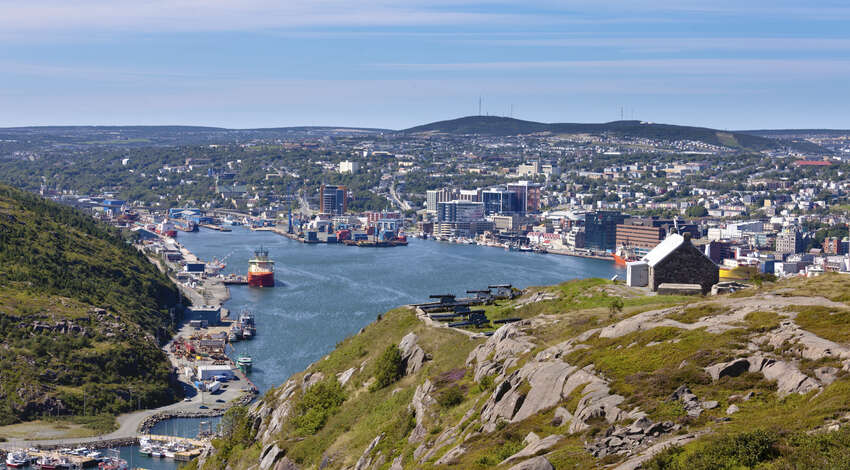
“The sea oh the sea, the wonderful sea
Long may she roam between people and me
And everyone here should get down on one knee
Thank God we're surrounded by water.”
—Newfoundland song with lyrics by Tom Cahill
First timers who travel to Paris may want to see the Eiffel Tower or hang out at a cafe in the 6th arrondissement. Those who go to Tanzania may want to go on a safari in Serengeti National Park. And there are those in Rome who may try to find just the right moment to experience the Colosseum without crowds.
But what entices a Road Scholar (and a confirmed city dweller) to travel to Newfoundland and Labrador? For that matter, why travel to a place that’s unfamiliar?
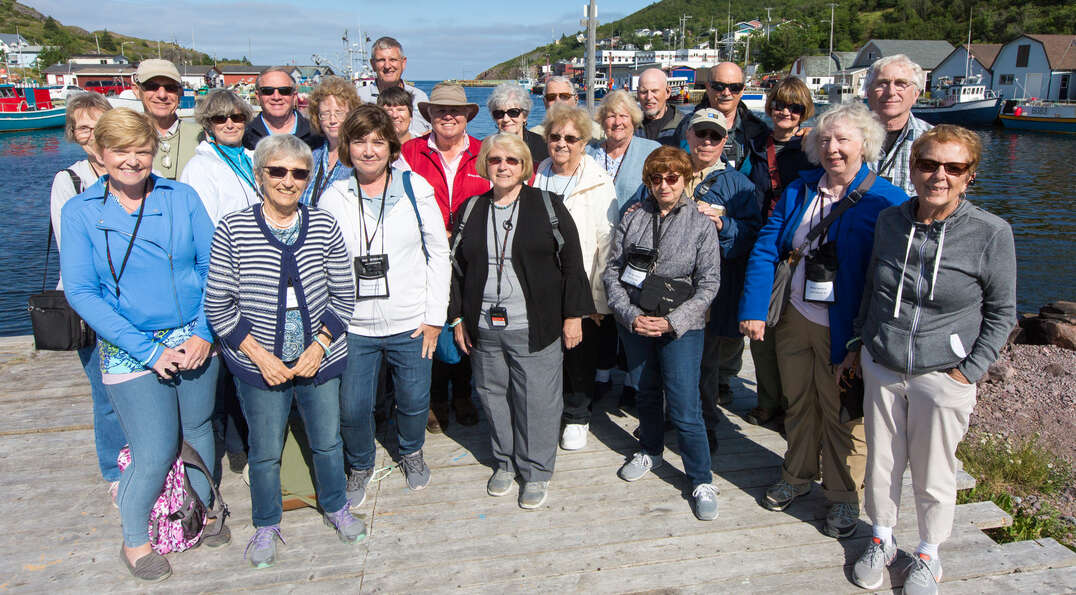
We Come From Away
Perhaps we experienced travelers have already visited most of the places we wanted to see. Perhaps we are inspired by the spirit of adventure or by books or films, or by a history lesson from a favorite teacher many years ago. For me, going to Newfoundland and Labrador was a leap into the unknown.
Last spring I was perusing the Road Scholar website and was trying to find a destination to fit my schedule and my growing inability to handle heat. I saw a program in Newfoundland and Labrador, and I realized that this place is totally different from anywhere I have ever been.
I dreamed that I would see puffins, my favorite bird (and I glossed over the fact that they mostly inhabit the opposite coast). I imagined lots of sky, conifers and not many people — about that I was not wrong. But basically, I was ignorant of most of what Newfoundland and Labrador had to offer.
I also found that, with a few exceptions, the other people on my program were also unaware of the culture and history of Newfoundland and Labrador (and no one knew that the Appalachian Mountains extend to Newfoundland). But eventually, 24 people climbed on board for a variety of reasons:
“(My sister) Alicia and I were looking for something different. We had a lot of interest in learning about the Indigenous Peoples in Canada, as well as learning about the history and knowing something about Canada other than the big cities.”
—Sally
“The one thing that was on my travel list was the Norse settlement at L'Anse aux Meadows (a UNESCO World Heritage Site). Knowing that this was the first European settlement on North America made this a priority for me. I have been to Iceland several times and the settlement was a big item in their sagas. The real benefit of Road Scholar is that they help us learn true history by introducing us to the actual place and records.”
—Norm
“I thought that visiting all of the Canadian provinces would be an interesting adventure. I had visited four, so when I heard about the program to Newfoundland and Labrador it seemed like the perfect opportunity to spend time with interesting people and explore another province. That was my 22nd Road Scholar program, and it won’t be my last.”
—Sandy
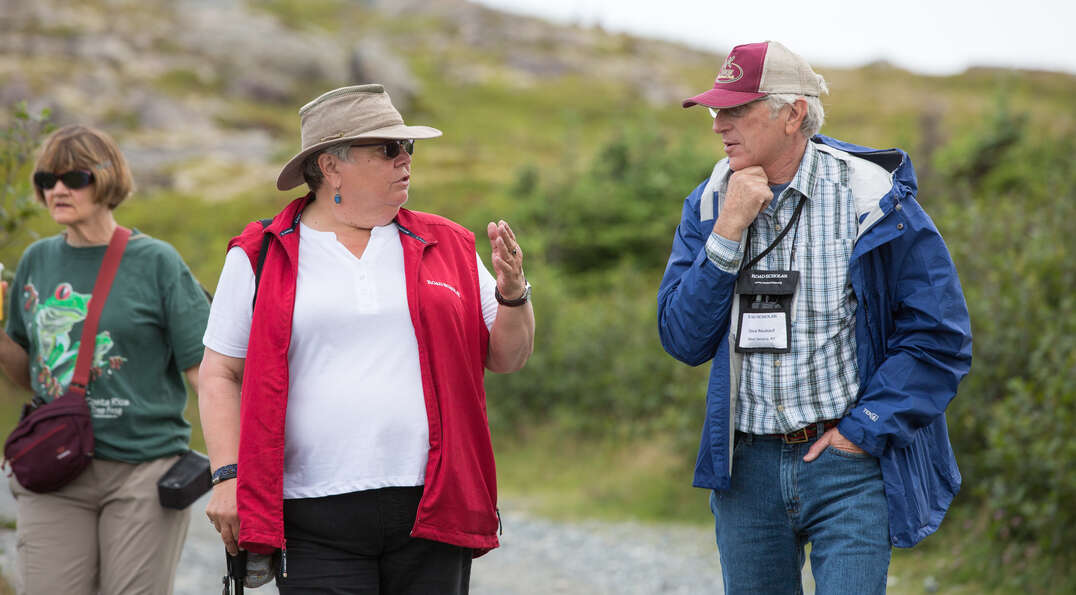
What We Discovered in Newfoundland and Labrador
1. We learned about more than a thousand years (or if you count the rock formations in Gros Morne National Park, 500 million years) of history. Newfoundland was the first stop in North America for Europeans bent on exploration. The Norse arrived there more than a thousand years ago, but their stay was brief. They were followed centuries later by explorers and fishing vessels with English, Irish, Portuguese, Basque and French crews. The Europeans found Indigenous Peoples when they first arrived, including the Inuit, Innu and Beothuk (the latter sadly wiped out by new settlers and disease).
2. We learned that the province is relatively new. While Newfoundland was claimed by John Cabot for the British Crown in 1497, Newfoundland only became a British colony in 1824 and a province in 1949. Labrador became part of the province in 2001.
3. We saw firsthand the impact of the collapse of the cod fishing industry. For centuries, people in Newfoundland and Labrador lived off the bounty of the sea. That changed in 1992 when the Canadian government imposed a moratorium on the cod fisheries. Some 30,000 people lost their jobs, and families that had populated these villages for hundreds of years scattered to other towns or to other provinces or countries. That history made our stay in Labrador particularly moving. We saw many abandoned villages and stayed in Battle Harbour, a fishing village in Labrador established in the 18th century which is now a kind of living museum to a life that is largely gone.
4. We learned geology. The first excursion on our journey was to Western Brook Pond on the west coast of Newfoundland. Since these waters were cut off from the Gulf of St. Lawrence by the movement of glaciers over millennia, the “pond” (really a fjord) has become one of the purest bodies of water in the world and heartbreakingly beautiful place.
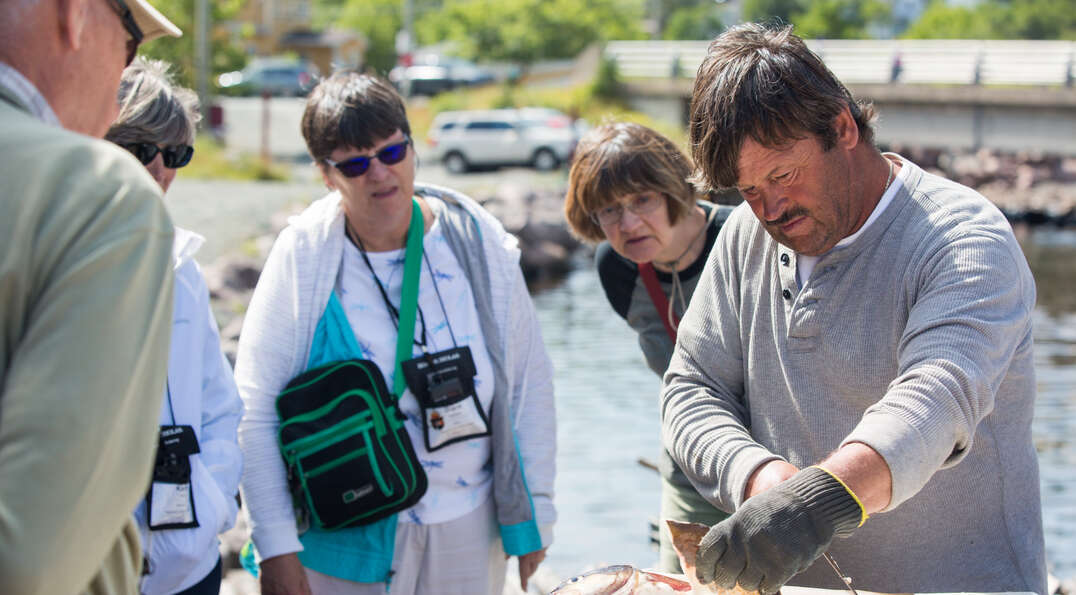
5. We learned about the and flora and fauna — and how changes in climate are affecting all of them. We spotted moose, caribou, whales, dolphins, cormorants — and even a puffin in the distance (if we squinted). And we experienced what seemed to be millions of black flies, but thankfully most were soon dispersed by the wind.
6. We learned some new vocabulary. Did you know that people greet each other in Newfoundland and Labrador by saying “Whaddya at?” And the answer to that is always “This is it.” We practiced this greeting ad nauseum. Our fearless leaders Joan and Tony Oxford helped us decipher and use some of the other colorful Newfoundland vocabulary as well. We especially loved to use the word “swarve,” which describes wandering aimlessly. We also used “tuckamore” to describe a bad hair day, because the tuckamores are trees bent and twisted by the fierce winds and rain. And “mauzy” does indeed sound like a description of a wet and foggy day.
7. We learned songs, poems and jokes. We sang folk songs (“Thank God we’re surrounded by water” was a favorite), led by Tony and his guitar — and later in the journey we listened to a particularly lovely duet on the bus with Tony and Joan. We especially loved Tony’s composed-on-the-fly song about our absolute (and seemingly total) lack of ability to remember what we had selected for daily meals on questionnaires submitted several months before our trip:
“Was it filet or chowder, I really am not sure,
I don’t think it was salmon ‘cause I had that choice before;
Was it salad, rice or French fries, it’s such a dicey call,
It’s better to be vegan where there is no choice at all.”
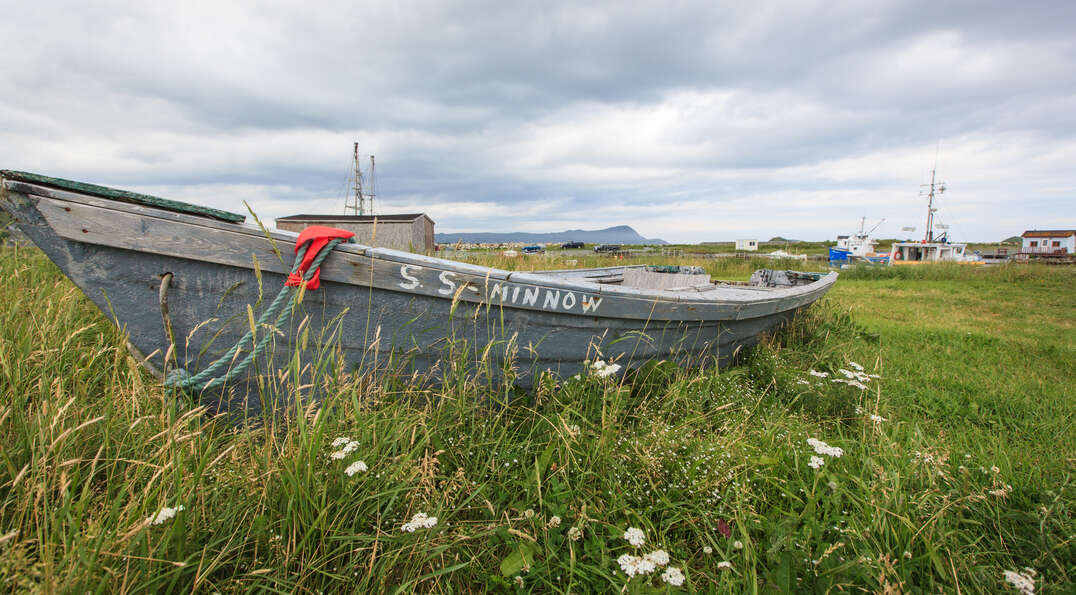
8. We did things we’d never done. On one particularly amazing day near the northern tip of Newfoundland, we found ourselves outfitted in cold weather survival suits on 28-foot offshore rigid hulled inflatable boats, chasing humpbacked whales and dolphins — and the elusive puffins. This was — along with the fjords in Gros Morne National Park and the icebergs we could almost touch in the waters on our way to Battle Harbour — a high point for many (although some of us quickly longed for the heat that we had happily escaped just a week earlier).
9. We learned things we never knew. Honestly, do you know what thrombolites are? We stopped at Flower’s Cove in Newfoundland to see thrombolites, which looked to the uninformed like plain old rocks but are actually the oldest living fossils in the world (thought to be 650 million years old). This is one of two locations on the planet where thrombolites are known to exist. As we explored the rocks, we heard the voice of our own travel mate, Sally, a retired pathologist from Gainesville, Florida, who later told me, “Tony handed me the microphone, and I just started to talk.” Sally had followed her passion in her home state of Florida and became a volunteer master naturalist, and she knew her subject. Her narrative made a quick stop to see “just” rocks into a unique experience and made many of us realize how curious and fascinating many Road Scholar travelers are.
10. We found a place of incredible beauty. I don’t think that any of us will soon forget the beauty of the province. I myself have always been a city person, but the clear and pure air, the quiet and the beauty of nature in Newfoundland and Labrador made it more than worth my while to come from away — and to realize how much there is to see, learn and experience in the world.
So, while many of us know where we want to go and why, may I suggest that there is much to be said for setting out into the world to experience a place we don’t know and had not considered before? As folks here would say, it may turn out to be lovely grand.

Barbara Winard has earned degrees in English literature, journalism and, later in life, gerontology. For the past 25 years she was a senior editor and writer of online encyclopedia articles for children. Prior to that, after returning from a long trip to Asia, Barbara was hired by the Asia Society in New York City to produce films and print materials about Asian culture. She was also a producer and writer for New York City’s public television station, WNET/13.

